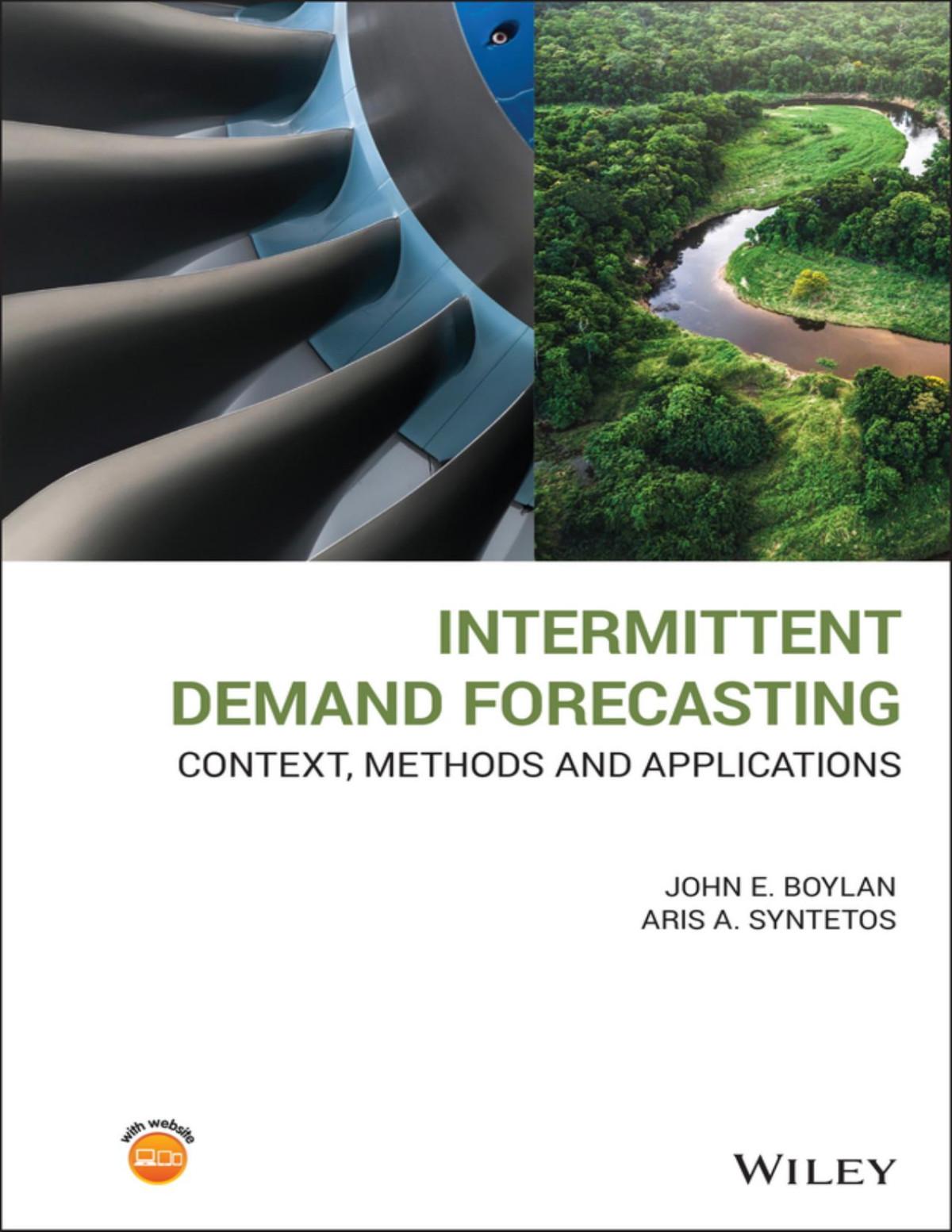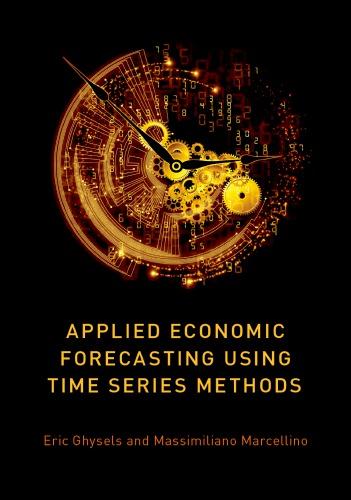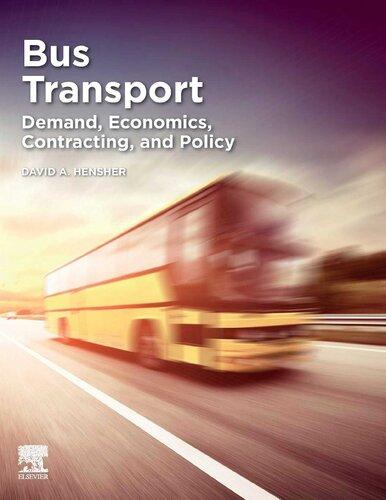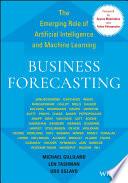IntermittentDemandForecasting
IntermittentDemandForecasting
Context,MethodsandApplications
JohnE.Boylan
LancasterUniversity Lancaster,UK
ArisA.Syntetos
CardiffUniversity Cardiff,UK
Thiseditionfirstpublished2021 ©2021JohnWiley&SonsLtd
Allrightsreserved.Nopartofthispublicationmaybereproduced,storedinaretrievalsystem,or transmitted,inanyformorbyanymeans,electronic,mechanical,photocopying,recordingorotherwise, exceptaspermittedbylaw.Adviceonhowtoobtainpermissiontoreusematerialfromthistitleisavailable athttp://www.wiley.com/go/permissions.
TherightofJohnE.BoyanandArisA.Syntetostobeidentifiedastheauthorsofthisworkhasbeen assertedinaccordancewithlaw.
RegisteredOffices
JohnWiley&Sons,Inc.,111RiverStreet,Hoboken,NJ07030,USA
JohnWiley&SonsLtd,TheAtrium,SouthernGate,Chichester,WestSussex,PO198SQ,UK
EditorialOffice 9600GarsingtonRoad,Oxford,OX42DQ,UK
Fordetailsofourglobaleditorialoffices,customerservices,andmoreinformationaboutWileyproducts visitusatwww.wiley.com.
Wileyalsopublishesitsbooksinavarietyofelectronicformatsandbyprint-on-demand.Somecontentthat appearsinstandardprintversionsofthisbookmaynotbeavailableinotherformats.
LimitofLiability/DisclaimerofWarranty
Thecontentsofthisworkareintendedtofurthergeneralscientificresearch,understanding,anddiscussion onlyandarenotintendedandshouldnotberelieduponasrecommendingorpromotingscientificmethod, diagnosis,ortreatmentbyphysiciansforanyparticularpatient.Inviewofongoingresearch,equipment modifications,changesingovernmentalregulations,andtheconstantflowofinformationrelatingtothe useofmedicines,equipment,anddevices,thereaderisurgedtoreviewandevaluatetheinformation providedinthepackageinsertorinstructionsforeachmedicine,equipment,ordevicefor,amongother things,anychangesintheinstructionsorindicationofusageandforaddedwarningsandprecautions. Whilethepublisherandauthorshaveusedtheirbesteffortsinpreparingthiswork,theymakeno representationsorwarrantieswithrespecttotheaccuracyorcompletenessofthecontentsofthisworkand specificallydisclaimallwarranties,includingwithoutlimitationanyimpliedwarrantiesofmerchantability orfitnessforaparticularpurpose.Nowarrantymaybecreatedorextendedbysalesrepresentatives,written salesmaterialsorpromotionalstatementsforthiswork.Thefactthatanorganization,website,orproduct isreferredtointhisworkasacitationand/orpotentialsourceoffurtherinformationdoesnotmeanthat thepublisherandauthorsendorsetheinformationorservicestheorganization,website,orproductmay provideorrecommendationsitmaymake.Thisworkissoldwiththeunderstandingthatthepublisheris notengagedinrenderingprofessionalservices.Theadviceandstrategiescontainedhereinmaynotbe suitableforyoursituation.Youshouldconsultwithaspecialistwhereappropriate.Further,readersshould beawarethatwebsiteslistedinthisworkmayhavechangedordisappearedbetweenwhenthisworkwas writtenandwhenitisread.Neitherthepublishernorauthorsshallbeliableforanylossofprofitorany othercommercialdamages,includingbutnotlimitedtospecial,incidental,consequential,orother damages.
LibraryofCongressCataloging-in-PublicationDataappliedfor
ISBN978-1-119-97608-0(hardback);LCCN-2021011006
CoverDesign:Wiley
CoverImage:MataAtlantica-AtlanticForestinBrazil©FGTrade/GettyImages,Turbine©Brasil2/Getty Images
Setin9.5/12.5ptSTIXTwoTextbySPiGlobal,Chennai,India 10987654321
ForJanandRachel
Contents
Preface xix
Glossary xxi
AbouttheCompanionWebsite xxiii
1EconomicandEnvironmentalContext 1
1.1Introduction 1
1.2EconomicandEnvironmentalBenefits 3
1.2.1After-salesIndustry 3
1.2.2DefenceSector 4
1.2.3EconomicBenefits 5
1.2.4EnvironmentalBenefits 5
1.2.5Summary 6
1.3IntermittentDemandForecastingSoftware 6
1.3.1EarlyForecastingSoftware 6
1.3.2DevelopmentsinForecastingSoftware 6
1.3.3OpenSourceSoftware 7
1.3.4Summary 7
1.4AboutthisBook 7
1.4.1OptimalityandRobustness 7
1.4.2BusinessContext 8
1.4.3StructureoftheBook 9
1.4.4CurrentandFutureApplications 10
1.4.5Summary 10
1.5ChapterSummary 11 TechnicalNote 11
2InventoryManagementandForecasting 13
2.1Introduction 13
2.2SchedulingandForecasting 13
2.2.1MaterialRequirementsPlanning(MRP) 13
2.2.2DependentandIndependentDemandItems 14
2.2.3MaketoStock 15
2.2.4Summary 15
2.3ShouldanItemBeStockedatAll? 15
2.3.1Stock/Non-StockDecisionRules 16
2.3.2HistoricalorForecastedDemand? 18
2.3.3Summary 18
2.4InventoryControlRequirements 19
2.4.1HowShouldStockRecordsbeMaintained? 19
2.4.2WhenareForecastsRequiredforStockingDecisions? 22
2.4.3Summary 24
2.5OverviewofStockRules 25
2.5.1ContinuousReviewSystems 25
2.5.2PeriodicReviewSystems 26
2.5.3PeriodicReviewPolicies 28
2.5.4Variationsofthe (R, S) PeriodicPolicy 29
2.5.5Summary 30
2.6ChapterSummary 30 TechnicalNotes 31
3ServiceLevelMeasures 33
3.1Introduction 33
3.2JudgementalOrdering 34
3.2.1RulesofThumbfortheOrder-Up-ToLevel 34
3.2.2JudgementalAdjustmentofOrders 34
3.2.3Summary 35
3.3AggregateFinancialandServiceTargets 35
3.3.1AggregateFinancialTargets 36
3.3.2ServiceLevelMeasures 36
3.3.3RelationshipsBetweenServiceLevelMeasures 38
3.3.4Summary 39
3.4ServiceMeasuresatSKULevel 39
3.4.1CostFactors 39
3.4.2UnderstandingofServiceLevelMeasures 40
3.4.3PotentialServiceLevelMeasures 40
3.4.4ChoiceofServiceLevelMeasure 41
3.4.5Summary 42
3.5CalculatingCycleServiceLevels 42
3.5.1DistributionofDemandOverOneTimePeriod 43
3.5.2CycleServiceLevelsBasedonAllCycles 44
3.5.3CycleServiceLevelsBasedonCycleswithDemand 45
3.5.4Summary 47
3.6CalculatingFillRates 48
3.6.1UnitFillRates 48
3.6.2FillRates:StandardFormula 49
3.6.3FillRates:Sobel’sFormula 51
3.6.4Summary 53
3.7SettingServiceLevelTargets 53
3.7.1ResponsibilityforTargetSetting 53
3.7.2Trade-offBetweenServiceandCost 54
3.7.3SettingSKULevelServiceTargets 55
3.7.4Summary 56
3.8ChapterSummary 56
TechnicalNote 57
4DemandDistributions 59
4.1Introduction 59
4.2EstimationofDemandDistributions 60
4.2.1EmpiricalDemandDistributions 60
4.2.2FittedDemandDistributions 62
4.2.3Summary 64
4.3CriteriaforDemandDistributions 64
4.3.1EmpiricalEvidenceforGoodnessofFit 64
4.3.2FurtherCriteria 64
4.3.3Summary 65
4.4PoissonDistribution 65
4.4.1ShapeofthePoissonDistribution 66
4.4.2Summary 67
4.5PoissonDemandDistribution 67
4.5.1Poisson:APrioriGrounds 67
4.5.2Poisson:EaseofCalculation 67
4.5.3Poisson:Flexibility 68
4.5.4Poisson:GoodnessofFit 69
4.5.5TestingforGoodnessofFit 70
4.5.6Summary 72
4.6IncidenceandOccurrence 72
4.6.1DemandIncidence 72
4.6.2DemandOccurrence 73
4.6.3Summary 74
4.7PoissonDemandIncidenceDistribution 75
4.7.1APrioriGrounds 75
4.7.2EaseofCalculation 75
4.7.3Flexibility 76
4.7.4GoodnessofFit 76
4.7.5Summary 79
4.8BernoulliDemandOccurrenceDistribution 79
4.8.1BernoulliDistribution:APrioriGrounds 79
4.8.2BernoulliDistribution:EaseofCalculation 80
4.8.3BernoulliDistribution:Flexibility 81
4.8.4BernoulliDistribution:GoodnessofFit 81
4.8.5Summary 82
4.9ChapterSummary 82
TechnicalNotes 83
x Contents
5CompoundDemandDistributions 87
5.1Introduction 87
5.2CompoundPoissonDistributions 88
5.2.1CompoundPoisson:APrioriGrounds 89
5.2.2CompoundPoisson:Flexibility 89
5.2.3Summary 89
5.3StutteringPoissonDistribution 90
5.3.1StutteringPoisson:APrioriGrounds 91
5.3.2StutteringPoisson:EaseofCalculation 91
5.3.3StutteringPoisson:Flexibility 93
5.3.4StutteringPoisson:GoodnessofFitforDemandSizes 93
5.3.5Summary 95
5.4NegativeBinomialDistribution 96
5.4.1NegativeBinomial:APrioriGrounds 96
5.4.2NegativeBinomial:EaseofCalculation 96
5.4.3NegativeBinomial:Flexibility 97
5.4.4NegativeBinomial:GoodnessofFit 98
5.4.5Summary 99
5.5CompoundBernoulliDistributions 100
5.5.1CompoundBernoulli:APrioriGrounds 100
5.5.2CompoundBernoulli:EaseofCalculation 100
5.5.3CompoundBernoulli:Flexibility 100
5.5.4CompoundBernoulli:GoodnessofFit 101
5.5.5Summary 101
5.6CompoundErlangDistributions 101
5.6.1CompoundErlangDistributions:APrioriGrounds 103
5.6.2CompoundErlangDistributions:EaseofCalculation 104
5.6.3CompoundErlang-2:Flexibility 104
5.6.4CompoundErlang-2:GoodnessofFit 104
5.6.5Summary 105
5.7DifferingTimeUnits 105
5.7.1PoissonDistribution 106
5.7.2CompoundPoissonDistribution 106
5.7.3CompoundBernoulliandCompoundErlangDistributions 107
5.7.4NormalDistribution 108
5.7.5Summary 110
5.8ChapterSummary 110 TechnicalNotes 111
6ForecastingMeanDemand 117
6.1Introduction 117
6.2DemandAssumptions 118
6.2.1ElementsofIntermittentDemand 119
6.2.2DemandModels 119
6.2.3AnIntermittentDemandModel 120
6.2.4Summary 121
6.3SingleExponentialSmoothing(SES) 121
6.3.1SESasanError-correctionMechanism 122
6.3.2SESasaWeightedAverageofPreviousObservations 122
6.3.3PracticalConsiderations 125
6.3.4Summary 126
6.4Croston’sCritiqueofSES 126
6.4.1BiasAfterDemandOccurringPeriods 126
6.4.2MagnitudeofBiasAfterDemandOccurringPeriods 128
6.4.3BiasAfterReviewIntervalswithDemands 128
6.4.4Summary 129
6.5Croston’sMethod 129
6.5.1MethodSpecification 129
6.5.2MethodApplication 130
6.5.3Summary 131
6.6CritiqueofCroston’sMethod 132
6.6.1BiasofSize-intervalApproaches 132
6.6.2InversionBias 132
6.6.3QuantificationofBias 133
6.6.4Summary 134
6.7Syntetos–BoylanApproximation 134
6.7.1PracticalApplication 134
6.7.2FrameworkforCorrectionFactors 135
6.7.3InitialisationandOptimisation 135
6.7.4Summary 138
6.8AggregationforIntermittentDemand 138
6.8.1TemporalAggregation 138
6.8.2Cross-sectionalAggregation 141
6.8.3Summary 142
6.9EmpiricalStudies 143
6.9.1SingleSeries,SinglePeriodApproaches 143
6.9.2SingleSeries,MultiplePeriodApproaches 144
6.9.3Summary 145
6.10ChapterSummary 145 TechnicalNotes 146
7ForecastingtheVarianceofDemandandForecastError 151
7.1Introduction 151
7.2MeanKnown,VarianceUnknown 151
7.2.1MeanDemandUnchangingThroughTime 152
7.2.2RelatingVarianceOverOnePeriodtoVarianceOvertheProtection Interval 152
7.2.3Summary 153
7.3MeanUnknown,VarianceUnknown 153
7.3.1MeanandVarianceUnchangingThroughTime 154
7.3.2MeanorVarianceChangingThroughTime 155
7.3.3RelatingVarianceOverOnePeriodtoVarianceOvertheProtection Interval 156
7.3.4DirectApproachtoEstimatingVarianceofForecastErrorOverthe ProtectionInterval 158
7.3.5ImplementingtheDirectApproachtoEstimatingVarianceOverthe ProtectionInterval 160
7.3.6Summary 160
7.4LeadTimeVariability 161
7.4.1ConsequencesofRecognisingLeadTimeVariance 161
7.4.2VarianceofDemandOveraVariableLeadTime(KnownMean Demand) 162
7.4.3VarianceofDemandOveraVariableLeadTime(UnknownMean Demand) 163
7.4.4DistributionofDemandOveraVariableLeadTime 164
7.4.5Summary 165
7.5ChapterSummary 165 TechnicalNotes 166
8InventorySettings 169
8.1Introduction 169
8.2NormalDemand 170
8.2.1Order-up-toLevelsforFourScenarios 170
8.2.2Scenario1:MeanandStandardDeviationKnown 170
8.2.3Scenario2:MeanDemandUnknownStandardDeviationKnown 172
8.2.4Scenario3:MeanDemandKnownStandardDeviationUnknown 175
8.2.5Scenario4:MeanandStandardDeviationUnknown 176
8.2.6Summary 177
8.3PoissonDemand 177
8.3.1CycleServiceLevelSystemwhentheMeanDemandisKnown 177
8.3.2FillRateSystemwhentheMeanDemandisKnown 178
8.3.3PoissonOUTLevelwhentheMeanDemandisUnknown 179
8.3.4Summary 181
8.4CompoundPoissonDemand 181
8.4.1StutteringPoissonOUTLevelwhentheParametersareKnown 181
8.4.2NegativeBinomialOUTLevelswhentheParametersareKnown 183
8.4.3StutteringPoissonandNegativeBinomialOUTLevelswhentheParameters areUnknown 183
8.4.4Summary 184
8.5VariableLeadTimes 184
8.5.1EmpiricalLeadTimeDistributions 184
8.5.2Summary 185
8.6ChapterSummary 185 TechnicalNotes 186
9AccuracyandItsImplications 193
9.1Introduction 193
9.2ForecastEvaluation 194
9.2.1OnlyOneStepAhead? 194
9.2.2AllPointsinTime? 194
9.2.3Summary 195
9.3ErrorMeasuresinCommonUsage 195
9.3.1PopularForecastErrorMeasures 195
9.3.2CalculationofForecastErrors 197
9.3.3MeanError 197
9.3.4MeanSquareError 198
9.3.5MeanAbsoluteError 198
9.3.6MeanAbsolutePercentageError(MAPE) 198
9.3.7100%MinusMAPE 199
9.3.8ForecastValueAdded 199
9.3.9Summary 200
9.4CriteriaforErrorMeasures 200
9.4.1GeneralCriteria 200
9.4.2AdditionalCriteriaforIntermittence 201
9.4.3Summary 201
9.5MeanAbsolutePercentageErroranditsVariants 201
9.5.1ProblemswiththeMeanAbsolutePercentageError 202
9.5.2MeanAbsolutePercentageErrorfromForecast 202
9.5.3SymmetricMeanAbsolutePercentageError 203
9.5.4MAPEFFandsMAPEforIntermittentDemand 204
9.5.5Summary 205
9.6MeasuresBasedontheMeanAbsoluteError 205
9.6.1MAE:MeanRatio 205
9.6.2MeanAbsoluteScaledError 206
9.6.3MeasuresBasedonAbsoluteErrors 207
9.6.4Summary 208
9.7MeasuresBasedontheMeanError 208
9.7.1DesirabilityofUnbiasedForecasts 209
9.7.2MeanError 209
9.7.3MeanPercentageError 210
9.7.4ScaledBiasMeasures 210
9.7.5Summary 211
9.8MeasuresBasedontheMeanSquareError 211
9.8.1ScaledMeanSquareError 212
9.8.2RelativeRootMeanSquareError 212
9.8.3PercentageBest 213
9.8.4Summary 213
9.9AccuracyofPredictiveDistributions 214
9.9.1MeasuringPredictiveDistributionAccuracy 214
9.9.2ProbabilityIntegralTransformforContinuousData 215
9.9.3ProbabilityIntegralTransformforDiscreteData 215
9.9.4Summary 217
9.10AccuracyImplicationMeasures 218
9.10.1SimulationOutline 218
9.10.2ForecastingDetails 218
9.10.3SimulationDetails 219
9.10.4ComparisonofSimulationResults 220
9.10.5Summary 221
9.11ChapterSummary 221 TechnicalNotes 221
10Judgement,Bias,andMeanSquareError 225
10.1Introduction 225
10.2JudgementalForecasting 225
10.2.1EvidenceonPrevalenceofJudgementalForecasting 226
10.2.2JudgementalBiases 226
10.2.3EffectivenessofJudgementalForecasts:EvidenceforNon-intermittent Items 229
10.2.4EffectivenessofJudgementalForecasts:EvidenceforIntermittent Items 230
10.2.5Summary 231
10.3ForecastBias 232
10.3.1MonitoringandDetectionofBias 232
10.3.2BiasasanExpectationofaRandomVariable 234
10.3.3ResponsetoDifferentCausesofBias 235
10.3.4Summary 236
10.4TheComponentsofMeanSquareError 236
10.4.1CalculationofMeanSquareError 236
10.4.2DecompositionofExpectedSquaredErrors 236
10.4.3DecompositionofExpectedSquaredErrorsforIndependentDemand 238
10.4.4Summary 239
10.5ChapterSummary 240 TechnicalNotes 240
11ClassificationMethods 243
11.1Introduction 243
11.2ClassificationSchemes 244
11.2.1ThePurposeofClassification 244
11.2.2ClassificationCriteria 245
11.2.3Summary 245
11.3ABCClassification 246
11.3.1ParetoPrinciple 246
11.3.2ServiceCriticality 246
11.3.3ABCClassificationandForecasting 247
11.3.4Summary 248
11.4ExtensionstotheABCClassification 248
11.4.1CompositeCriterionApproach 249
11.4.2Multi-criteriaApproaches 250
11.4.3ClassificationforSpareParts 250
11.4.4Summary 251
11.5ConceptualClarifications 251
11.5.1DefinitionofNon-normalDemandPatterns 251
11.5.2ConceptualFramework 252
11.5.3Summary 253
11.6ClassificationBasedonDemandSources 254
11.6.1DemandGeneration 254
11.6.2AQualitativeClassificationApproach 254
11.6.3Summary 255
11.7Forecasting-basedClassifications 255
11.7.1ForecastingandGeneralisation 256
11.7.2ClassificationSolutions 257
11.7.3Summary 258
11.8ChapterSummary 259 TechnicalNotes 260
12MaintenanceandObsolescence 263
12.1Introduction 263
12.2MaintenanceContexts 264
12.2.1Summary 265
12.3CausalForecasting 265
12.3.1CausalForecastingforMaintenanceManagement 266
12.3.2Summary 268
12.4TimeSeriesMethods 268
12.4.1ForecastinginthePresenceofObsolescence 269
12.4.2ForecastingwithGranularMaintenanceInformation 272
12.4.3Summary 273
12.5ForecastinginContext 273
12.6ChapterSummary 275 TechnicalNotes 276
13Non-parametricMethods 279
13.1Introduction 279
13.2EmpiricalDistributionFunctions 280
13.2.1Assumptions 281
13.2.2LengthofHistory 281
13.2.3Summary 282
13.3Non-overlappingandOverlappingBlocks 282
13.3.1DifferencesBetweentheTwoMethods 282
13.3.2MethodsandAssumptions 284
13.3.3PracticalConsiderations 284
13.3.4PerformanceofNon-overlappingBlocksMethod 285
13.3.5PerformanceofOverlappingBlocksMethod 285
13.3.6Summary 286
13.4ComparisonofApproaches 286
13.4.1TimeSeriesCharacteristicsFavouringOverlappingBlocks 286
13.4.2EmpiricalEvidenceonOverlappingBlocks 287
13.4.3Summary 289
13.5ResamplingMethods 289
13.5.1SimpleBootstrapping 289
13.5.2BootstrappingDemandSizesandIntervals 290
13.5.3VZBootstrapandtheSyntetos–BoylanApproximation 292
13.5.4ExtensionofMethodstoVariableLeadTimes 293
13.5.5ResamplingImmediatelyAfterDemandOccurrence 293
13.5.6Summary 294
13.6LimitationsofSimpleBootstrapping 294
13.6.1AutocorrelatedDemand 294
13.6.2PreviouslyUnobservedDemandValues 295
13.6.3Summary 296
13.7ExtensionstoSimpleBootstrapping 296
13.7.1Discrete-timeMarkovChains 296
13.7.2ExtensiontoSimpleBootstrappingUsingMarkovChains 297
13.7.3Jittering 299
13.7.4LimitationsofJittering 300
13.7.5FurtherDevelopments 300
13.7.6EmpiricalEvidenceonBootstrappingMethods 300
13.7.7Summary 302
13.8ChapterSummary 302 TechnicalNotes 303
14Model-basedMethods 305
14.1Introduction 305
14.2ModelsandMethods 305
14.2.1ASimpleModelforSingleExponentialSmoothing 306
14.2.2CritiqueofWeightedLeastSquares 307
14.2.3ARIMAModels 307
14.2.4TheARIMA(0,1,1)ModelandSES 308
14.2.5Summary 309
14.3IntegerAutoregressiveMovingAverage(INARMA)Models 309
14.3.1IntegerAutoregressiveModelofOrderOne,INAR(1) 310
14.3.2IntegerMovingAverageModelofOrderOne,INMA(1) 312
14.3.3MixedIntegerAutoregressiveMovingAverageModels 312 14.3.4Summary 313
14.4INARMAParameterEstimation 313
14.4.1ParameterEstimationforINAR(1)Models 313
14.4.2ParameterEstimationforINMA(1)Models 314
14.4.3ParameterEstimationforINARMA(1,1)Models 314
14.4.4Summary 315
14.5IdentificationofINARMAModels 315
14.5.1IdentificationUsingAkaike’sInformationCriterion 315
14.5.2GeneralModelsandModelIdentification 316
14.5.3Summary 317
14.6ForecastingUsingINARMAModels 317
14.6.1ForecastingINAR(1)MeanDemand 318
14.6.2ForecastingINMA(1)MeanDemand 318
14.6.3ForecastingINARMA(1,1)MeanDemand 319
14.6.4ForecastingUsingTemporalAggregation 319
14.6.5Summary 319
14.7PredictingtheWholeDemandDistribution 319
14.7.1ProtectionIntervalofOnePeriod 320
14.7.2ProtectionIntervalofMoreThanOnePeriod 320
14.7.3Summary 322
14.8StateSpaceModelsforIntermittence 322
14.8.1Croston’sDemandModel 323
14.8.2ProposedStateSpaceModels 324
14.8.3Summary 325
14.9ChapterSummary 325 TechnicalNotes 325
15SoftwareforIntermittentDemand 329
15.1Introduction 329
15.2TaxonomyofSoftware 330
15.2.1ProprietarySoftware 330
15.2.2OpenSourceSoftware 332
15.2.3HybridSolutions 333
15.2.4Summary 333
15.3FrameworkforSoftwareEvaluation 333
15.3.1KeyAspectsofSoftwareEvaluation 334
15.3.2AdditionalCriteria 335
15.3.3Summary 336
15.4SoftwareFeaturesandTheirAvailability 336
15.4.1SoftwareFeaturesforIntermittentDemand 336
15.4.2AvailabilityofSoftwareFeatures 337
15.4.3Summary 338
15.5Training 339
15.5.1Summary 340
15.6ForecastSupportSystems 340
15.6.1Summary 341
15.7AlternativePerspectives 341
15.7.1BayesianMethods 342
15.7.2NeuralNetworks 342
15.7.3Summary 343
15.8WayForward 343
15.9ChapterSummary 345
TechnicalNote 345
References 347
AuthorIndex 365
SubjectIndex 367
Preface
Theimagesonthefrontofthisbookhighlightacrucialtensionforalladvancedeconomies. Thereisadesiretotravelmoreandconsumemore,butalsoagrowingawarenessofthe detrimentaleffectsthatthisishavingontheenvironment.Thereisabelatedrealisation thatthoseofuslivingincountrieswithdevelopedeconomiesneedtoconsumelessand wasteless.
Wastecanoccuratallstagesofthesupplychain.Consumersmaybuyfoodtheynevereat orclothestheyneverwear.Retailersandwholesalersmayordergoodsfrommanufacturers thatneversell.Thesewastagescanbesignificantlyreducedbybetterdemandforecasting andinventorymanagement.Someitemsconformtoregulardemandpatternsandarerelativelyeasytoforecast.Otheritems,withirregularandintermittentdemandpatterns,are muchharder.
Wastagecanbeaddressedbychangesinproduction,movingawayfrombuilt-inobsolescenceandtowardsproductsthatcanbemaintainedandrepairedeconomically.Forthisto beanattractiveproposition,sparepartsneedtobereadilyavailable.Unfortunately,these itemsareoftenthemostdifficulttoforecastbecausemanyofthemaresubjecttothesporadicnatureofintermittentdemand.Althoughtherehavebeensignificantadvancesin intermittentdemandforecastingoverrecentdecades,thesearenotallavailableincommercialsoftware.Inthefinalchapterofthisbook,wehighlighttheprogressthathasbeen made,includingmethodsthatarefreelyavailableinopensourcesoftware.
Thereasonsfortheslowadoptionofnewforecastingmethodsandapproachesincommercialsoftwarearevaried.Webelievethatoneofthereasonsisalackofappreciationof thebenefitsthatmayaccrue.Becauseintermittentdemanditemsaresodifficulttoforecast, itmaybethoughtthat highlyaccurate forecastingmethodscanneverbefound.Thismaybe true.However,itispossibletofind moreaccurate methods,whichcancontributetowards significantimprovementsininventorymanagement.
Thereisalsoaneedforgreaterawarenessofthemethodsthathavebeendevelopedin recentyears.Informationonthemisscatteredamongstavarietyofacademicjournals,and someofthearticlesarehighlytechnical.Therefore,wehavesetourselvesthechallenge ofsynthesizingthisbodyofknowledge.Wehaveendeavouredtobringtogetherthemain strandsofresearchintoacoherentwhole,andassumingnopriorknowledgeofthesubject.
Therearevariousperspectivesfromwhichdemandforecastingcanbeaddressed.One optionwouldbetotakeanoperationsmanagementview,withafocusonforecastingand planningprocesses.Anotherwouldbetotakeamorestatisticalperspective,startingwith
mathematicalmodelsandworkingthroughtheirproperties.Whilesomeofourmaterial hasbeeninfluencedbytheseorientations,thedominantperspectiveofthisbookisthatof operationalresearch(OR).ThestartpointofORshouldalwaysbethereal-lifesituation thatisencountered.Thismeansthatitisessentialtogainanin-depthunderstandingof inventorysystemsandhowforecastsinformthesedecisions.Suchanappreciationenablesa sharperfocusonforecastingrequirementsandtheappropriatecriteriafora‘goodforecast’.
Inthisbook,thefirstthreechaptersfocusontheinventorymanagementcontextinwhich forecastingoccurs,includingtheinventorypoliciesandtheservicelevelmeasuresthatare appropriateforintermittentdemand.Recognisingtheinterconnectionbetweeninventory policies,demanddistributions,andforecastingmethods,thenexttwochaptersfocuson demanddistributions,includingevidencefromstudiesofreal-worlddata.Thefollowing twochaptersconcentrateonforecastingmethods,withdiscussionofpracticalissuesthat mustbeaddressedintheirimplementation.Wethenturntothelinkagebetweenforecasts andinventoryavailability,andreviewhowforecastaccuracyshouldbemeasuredandhow itsimplicationsforinventoriesshouldbeassessed.Wealsolookathowstockkeepingunits shouldbeclassifiedforforecastingpurposes,andexaminemethodsdesignedspecifically toaddressmaintenanceandobsolescence.Thenexttwochaptersdealwithmethodsthat cantacklemorechallengingdemandpatterns.Weconcludewithareviewofforecasting softwarerequirementsandourviewsonthewayforward.
Wearegratefultothosepioneerswhoinspiredustostudythissubject,andwhohave givenusvaluableadviceovertheyears,especiallyJohnCroston,RoyJohnston,andTom Willemain.Wewouldliketoexpressourthankstothosewhocommentedondraftchapters ofthisbook:ZiedBabai,StephenDisney,RobertFildes,ThanosGoltsos,MatteoKalchschmidt,StephanKolassa,NikosKourentzes,MonaMohammadipour,EricaPastore,Fotios Petropoulos,DennisPrak,Anna-LenaSachs,andIvanSvetunkov;andtoNicoleAyiomamitouandAntonisSiakalliswhohelpedwiththefigures.
LancasterandCardiff January2021
JohnE.Boylan ArisA.Syntetos
Glossary
ADIDAaggregate–disaggregateintermittentdemandapproach
AICAkaikeinformationcriterion
ARautoregressive
ARIMAautoregressiveintegratedmovingaverage
ARMAautoregressivemovingaverage
APEabsolutepercentageerror
BObackorder
BoMbillofmaterials
BSBrierscore
CDFcumulativedistributionfunction
CFEcumulativeforecasterror
CSLcycleservicelevel(allreplenishmentcycles)
CSL+ cycleservicelevel(replenishmentcycleswithsomedemand)
CVcoefficientofvariation
EDFempiricaldistributionfunction
ERPenterpriseresourceplanning
FMECAfailuremode,effects,andcriticalityanalysis
FRfillrate
FSSforecastsupportsystem
FVAforecastvalueadded
HEShyperbolicexponentialsmoothing
INARintegerautoregressive
INARMAintegerautoregressivemovingaverage
INMAintegermovingaverage
IPinventoryposition
KSKolmogorov–Smirnov(test)
LTDlead-timedemand
MAmovingaverage
MADmeanabsolutedeviation
MAEmeanabsoluteerror
MAPEmeanabsolutepercentageerror
MAPEFFmeanabsolutepercentageerrorfromforecast
MASEmeanabsolutescalederror
MEmeanerror
MMSEminimummeansquareerror
MPEmeanpercentageerror
MPSmasterproductionschedule
MROmaintenance,repair,andoperations
MRPmaterialrequirementsplanning
MSEmeansquareerror
MSOEmultiplesourceoferror
MTOmaketoorder
MTSmaketostock
NBDnegativebinomialdistribution
NNneuralnetwork
NOBnon-overlappingblocks
OBoverlappingblocks
OUTorderupto
PISperiodsinstock
PITprobabilityintegraltransform
RMSErootmeansquareerror
rPITrandomisedprobabilityintegraltransform
S&OPsalesandoperationsplanning
SBASyntetos–BoylanApproximation(method)
SBCSyntetos–Boylan–Croston(classification)
SCMsupplychainmanagement
SESsingle(orsimple)exponentialsmoothing
SKUstockkeepingunit
SLAservicelevelagreement
SMAsimplemovingaverage
sMAPEsymmetricmeanabsolutepercentageerror
sMSEscaledmeansquareerror
SOHstockonhand
SOOstockonorder
SSOEsinglesourceoferror
TSBTeunter–Syntetos–Babai(method)
VZViswanathan–Zhou(method)
WMHWrightModifiedHolt(method)
WSSWillemain–Smart–Schwarz(method)
EconomicandEnvironmentalContext
1.1Introduction
Demandforecastingisthebasisformostplanningandcontrolactivitiesinanyorganisation. Unlessaforecastoffuturedemandisavailable,organisationscannotcommittostaffinglevels,productionschedules,inventoryreplenishmentorders,ortransportationarrangements. Itisdemandforecastingthatsetstheentiresupplychaininmotion.
Demandwilltypicallybeaccumulatedinsomepre-defined‘timebuckets’(periods),such asaday,aweek,oramonth.Thedeterminationofthelengthofthetimeperiodthatconstitutesatimebucketisaveryimportantdecision.Itisachoicethatshouldrelatetothenature oftheindustryandthevolumeofthedemanditselfbutitmayalsobedictatedbytheIT infrastructureorsoftwaresolutionsinplace.Regardlessofthelengthofthetimebuckets, demandrecordseventuallyformatimeseries,whichisasequenceofsuccessivedemand observationsovertimeperiodsofequallength.
Onmanyoccasions,demandmaybeobservedineverytimeperiod,resultinginwhat issometimesreferredtoas‘non-intermittentdemand’.Alternatively,demandmayappear sporadically,withnodemandatallinsomeperiods,leadingtoanintermittentappearance ofdemandoccurrences.Shouldthatbethecase,contributiontorevenuesisnaturallylower thanthatoffaster-movingdemanditems.Intermittentdemanditemsdonotattractmuch marketingattention,astheywillrarelybethefocusofapromotion,forexample.However, theyhavesignificantcostimplicationsforasimplereason:thereareoftenmanyofthem! Serviceorsparepartsareveryfrequentlycharacterisedbyintermittentdemandpatterns. Theseitemsareessentiallycomponentsor(sub-)assembliescontributingtothebuild-up ofafinalproduct.However,theyface‘independentdemand’,whichisdemandgenerated directlyfromcustomers,ratherthanproductionrequirementsforaparticularnumberof unitsofthefinalproduct.Intheafter-salesenvironment(or‘aftermarket’),wedealexclusivelywith‘independentdemand’items.Servicepartsfacingintermittentdemandmay representalargeproportionofanorganisation’sinventoryinvestment.Insomeindustries, thisproportionmaybeashighas60%or70%(Syntetos2011).Themanagementofthese itemsisaveryimportanttaskwhich,whensupportedbyintelligentinventorycontrolmechanisms,mayyielddramaticcostreductions. IntermittentDemandForecasting:Context,MethodsandApplications, FirstEdition. JohnE.BoylanandArisA.Syntetos. ©2021JohnWiley&SonsLtd.Published2021byJohnWiley&SonsLtd. CompanionWebsite:www.wiley.com/go/boylansyntetos/intermittentdemandforecasting
Industriesthatrelyheavilyonafter-salessupport,includingtheautomotive,IT,and electronicssectors,aredominatedbyintermittentdemanditems.Thecontributionsof theafter-salesservicestothetotalrevenuesoforganisationsintheseindustrieshavebeen reportedtobeashighas60%(Johnstonetal.2003).Thissignifiesanopportunitynot onlytoreducecostsbutalsotoincreaserevenuesthroughacarefulbalancingofkeeping enoughinstocktosatisfycustomersbutnotsomuchastounnecessarilyincreaseinventory investments.Therearetremendouseconomicbenefitsthatmayberealisedthroughthe reappraisalofmanagingintermittentdemanditems.
Therearealsosignificantenvironmentalbenefitstoberealisedbysuchareappraisal. Becauseoftheirinherentslowmovement,intermittentdemanditemsareatthegreatest riskofobsolescence.Theproblemisexacerbatedbythegreatlyreducedproductlifecycles inmodernindustry.Thisaffectstheplanningprocessforallintermittentdemanditems (bothfinalproductsandsparepartsusedtosustaintheoperationoffinalproducts).Better forecastingandinventorydecisionsmayreduceoverallscrapandwaste.Furthermore,the sustainedprovisionofsparepartsmayalsoreduceprematurereplacementoftheoriginal equipment.
Theareaofintermittentdemandforecastinghasbeenneglectedbyresearchersandpractitionersfortoolong.Fromabusinessperspective,thismaybeexplainedintermsofthelack offocusonintermittentdemanditemsbythemarketingfunctionoforganisations.However,thetougheconomicconditionsexperiencedfromaround2010onwardshaveresulted inaswitchofemphasisfromrevenuemaximisationtocostminimisation.Thisswitchrepositionsintermittentdemanditemsasthefocusofattentioninmanycompanies,aspartof thedrivetodramaticallycutdowncostsandremaincompetitive.Inaddition,themore recentemergenceoftheafter-salesbusinessasamajordeterminantofcompanies’success hasalsoledtotherecognitionofintermittentdemandforecastingasanareaofexceptional importance.
FollowingaseminalcontributioninthisareabyJohnCrostonin1972,intermittent demandforecastingreceivedverylittleattentionbyresearchersoverthenext20years.This wasincontrasttotheextensiveresearchconductedonforecastingfaster-movingdemand items.Researchactivitygrewrapidlyfromthemid-1990sonwards,andwehavenow reachedastagewhereacomprehensivebodyofknowledge,boththeoreticalandempirical, hasbeendevelopedinthisarea.Thisbookaimstoprovidepractitioners,students,and academicresearcherswithasinglepointofreferenceonintermittentdemandforecasting. Althoughthereareconsiderableopeningsforfurtheradvancements,thecurrentstateof knowledgeoffersorganisationssignificantopportunitiestoimprovetheirintermittent demandforecasting.Numerousreports,tobediscussedinmoredetaillaterinthischapter, indicatethatintermittentdemandforecastingisoneofthemajorproblemsfacingmodern organisations.Specialisedsoftwarepackagesoffersomeforecastingsupporttocompanies buttheyoftenlagbehindnewdevelopments.Therearegreatbenefitsthathavenotyet beenachievedinthisarea,andwehopethatthisbookwillmakeacontributiontowards theirrealisation.
Therearethreemainaudiencesforthisbook:
1.Supplychainmanagement(SCM)practitioners,broadlydefined,whowishtorealisethe fullbenefitsofmanagingintermittentdemanditems.
2.Softwaredesignerswantingtoincorporatenewdevelopmentsinforecastingintotheir software.
3.Studentsandacademicswishingtolearnandincorporateintotheircurricula,respectively,thestateoftheartinintermittentdemandforecasting.
Insummary,businesspressurestoreducecostsandenvironmentalpressurestoreduce scrap(oftenintroducedintheformofprescribedpoliciesimposedbynationalgovernments ortheEUforexample)renderintermittentdemanditems,andforecastingtheirrequirements,oneofthemostimportantareasinmodernorganisations.
Therearegreatbenefitsassociatedwithforecastingintermittentdemandmoreaccurately,andthosebenefitsarefarfrombeingrealised.Thismaybeexplainedbythewell reportedinnovation–adoptiongap,whicharisesfromthedivergencebetweeninnovationsandreal-worldpractices.Organisationalpracticestypicallylagbehindsoftware developments,andsoftwaredevelopmentstypicallylagbehindthestateoftheartinthe academicliterature.Itistheaimofthisbooktobridgethesegapsandshowhowintelligent intermittentdemandforecastingmayresultinsignificanteconomicandenvironmental benefits.
Intheremainderofthischapter,wefirstdiscussinmoredetailthepotentialbenefitsthat mayberealisedthroughimprovedintermittentdemandforecasting.Wethenprovidean overviewofthecurrentstateofsupplychainsoftwarepackagesandenterpriseresource planning(ERP)solutionswithregardtointermittentdemandforecasting.Thisisfollowed byasectionwhereweelaborateonboththestructureofthisbookandtheperspectivethat wetakeregardingthematerialpresentedhere.Weclosewithasummaryofthechapter.
1.2EconomicandEnvironmentalBenefits
Intermittentdemandforproductsappearssporadically,withsometimeperiodsshowing nodemandatall.Moreover,whendemandoccurs,thedemandsizemaybeconstantor variable,perhapshighlyso,leadingtowhatisoftentermed‘lumpydemand’.Laterinthis chapter,wediscusswhyforecastingsporadicandlumpydemandpatternsisaverydifficult task.Specificcharacterisationsofintermittentdemandseriesareconsideredindetailin Chapters4and5.
1.2.1After-salesIndustry
Intermittentdemanditemsdominateserviceandrepairpartsinventoriesinmanyindustries(BoylanandSyntetos2010).AsurveybyDeloitteResearch(2006)benchmarkedthe servicebusinessesofmanyoftheworld’slargestmanufacturingcompanieswithcombined revenuesreachingmorethan$1.5trillion;serviceoperationsaccountedforanaverageof 25%ofrevenues.Inadditiontotheircontributiontorevenues,theseitemspresentadistinct opportunityforcostreductions.Maintenance,repair,andoperations(MRO)inventories typicallyaccountforasmuchas40%oftheannualprocurementbudget(Donnelly2013). Increasedrevenuesandreducedcostsnaturallyleadtoincreasedprofits.Manyorganisationshaverepeatedlytestifiedtotheimportanceofafter-salesservicesfortheirbusinesses
andtheprofitstheygenerate.CompaniessuchasBeretta,Canon,DAFTrucks,Electrolux, EPTA,GEOil&Gas,andLavapiuhavereportedcontributionsoftheafter-salesservices totheirtotalprofitofupto50%(Syntetos2011).Comparablenumbershavebeenreported byGaiardellietal.(2007),Kimetal.(2007),andGluecketal.(2007),whileafter-salesservicehasbeenidentifiedasakeyprofitleverinthemanufacturingsector(Manufacturing Management2018).
Intermittentdemanditemsareatthegreatestriskofobsolescence.Manycasestudies (e.g.Molenaersetal.2012)havedocumentedlargeproportionsof‘dead’(obsolete)stockin avarietyofindustries,withseriousenvironmentalimplications.However,under-stocking situationsmaybeasharmful,giventhepotentiallyhighcriticalityoftheitemsinvolved. Incivilaviation,forexample,lackofsparepartsisoneofthemajorcausesof‘aircrafton ground’events(problemsseriousenoughtopreventaircraftfromflying).Badkook(2016) foundthataquarteroftheaircraftinan(un-named)airline’sBoeing777fleetwereaffected bysuchaircraftongroundeventsoverayear.
1.2.2DefenceSector
Defenceinventories,whicharehighlyreliantonspareparts,havebeenrepeatedlyidentified asahighriskareawithadirectimpactonanation’seconomy.IntheUnitedStatesfor example,theDepartmentofDefense(DoD)managesaroundfivemillionsecondaryitems. Theseincluderepairablecomponents,subsystems,assemblies,consumablerepairparts, andbulkitems.Theyreportedthat,asofSeptember2017,thevalueoftheinventorywas$93 billion(GAO2019).Althoughamatterofconcern,therehadbeennosubstantialreductions ininventoryvaluesoverthepreviousdecade(being,forexample,$95billionin2013and 2010;GAO2012,2015).
Amajordeterminantoftheperformanceofaninventorysystemistheforecasting method(s)beingusedtopredictdemand.Inaccurateforecastsleadtoeitherexcess inventoryorshortfalls,dependingonthedirectionoftheforecasterror.Over-forecasting canleadtoholdingstocksthataresimplynotneeded.AccordingtotheUSGovernment AccountabilityOffice(GAO2011,p.11),‘Ourrecentworkidentifieddemandforecasting astheleadingreasonwhytheservicesandDLA[DefenseLogisticsAgency]accumulate excessinventory’.
Unfortunately,progressinimprovingforecastingandinventorymanagementhasbeen slowinmanyindustries,withthedefenceindustrybeingacaseinpoint.TheGAOofthe UnitedStatesreported,‘Since1990,wehaveidentifiedDoD[DepartmentofDefense]supplychainmanagementasahigh-riskareadueinparttoineffectiveandinefficientinventory managementpracticesandprocedures,weaknessesinaccuratelyforecastingthedemand forspareparts,andothersupplychainchallenges.Ourworkhasshownthatthesefactors havecontributedtotheaccumulationofbillionsofdollarsinsparepartsthatareexcess tocurrentneeds’(GAO2015,p.2).Progressininventorymanagementhasbeenmade sincethen,especiallywithregardtothevisibilityofphysicalinventories,receiptprocessing,andcargotracking(GAO2019).Theseimprovementsininformationsystemshaveled toinventorymanagementbeingremovedfromthelistofhigh-riskareas.However,itis notablethatnoclaimshaveyetbeenmadeforcorrespondingimprovementsindemand forecasting.
Movingbeyondtheafter-salesindustry,andthedefencesector,wenowexaminethepotentialbenefitsthatmayresultfromintelligentintermittentdemandforecastingforthewider economy.Purchasedgoodsinventoriesandtheirmanagementaresignificantconcernsfor firmswishingtoremaincompetitiveandsurviveinthemarketplace.Accordingtothe26th AnnualStateofLogisticsreport(CSCMP2015,statisticsreferringto2014),theUnitedStates alonehasbeensittingonapproximately$2trillionworthofgoodsheldforsale.Accordingto thesamereport,theinventorycarryingcosts(taxes,obsolescence,depreciation,andinsurance)areestimatedtobearound$0.5trillion(i.e.about25%ofthevalueofthegoods). Thetotalvalueofinventorywasequivalenttoapproximately14%oftheUSgrossdomestic product(GDP)in2014.Althoughsimilarstatisticshavenotbeengiveninsubsequentpublications,the30thAnnualStateofLogisticsReport(CSCMP2019)revealedthatinventory carryingcostsintheUnitedStatesincreasedby14.8%between2014and2018.
Thesefiguresshowthatahugeamountofcapitalistiedupinwarehouses.Theyalsoindicatethatsmallimprovementsinmanaginginventoriesmaybetranslatedintoconsiderable costbenefits.Weshould,therefore,notbesurprisedtolearnthatfirms,frommanufacturing towholesaletoretail,arecurrentlyintensifyingtheirsearchformoreefficientandeffective inventorymanagementapproaches.Theiraimistominimisenotonlytheirdirectinvestmentsinpurchasedgoodsinventorybutalsotheindirectcostincurredinmanagingthis inventory.Inamaketostock(MTS)environment(discussedinSection1.4.2),ifthereisno decouplingintermsoftheownershipandlocationoftheinventories,thentheseindirect costsbecomemoresignificantthelongerthestockremainsunsold.Thehighvolumesof stocksofintermittentdemanditems,andtheirhighriskofobsolescence,shouldputthem veryhighupthelistofprioritiesformodernbusinesses.
1.2.4EnvironmentalBenefits
Obsolescenceisaveryimportanttopicforsupplychainmanagement.Thecomplexityof supplychains,inconjunctionwithincreasinglyreducedproductlifecycles,isresultingin highlevelsofobsolescence.Molenaersetal.(2012)discussedacasestudywhere54%of thepartsstockedatalargepetrochemicalcompanyhadseennodemandforthelastfive years.Syntetosetal.(2009b)evaluatedtheinventorypracticesemployedintheEuropean sparepartslogisticsnetworkofaJapanesemanufacturer.Theyfoundonecase,reportedin Sweden,wheresomepartsinstockhadnot‘moved’atalloverthepreceding10years.The valueoftheon-handexcess(spareparts)inventoryoftheUSAirForce,Navy,andArmyhas beenestimatedtobeof$1.7billion,$1.4billion,and$2.5billion,respectively(GAO2015). Muchofthisexcessstockisatriskofobsolescence.
Whenobsolescent(or‘dead’)stockiscreated,thereisconsiderableenvironmentalwaste. Firstly,thereisanenvironmentalcostassociatedwithproducinggoodsthatareneverused. Secondly,thereareenvironmentalcostsoftransportingthesegoodstonational,regional, orlocalstockingpoints.Finally,thereareenvironmentalcostsofdisposingofthesestocks. Thepreventionoftheaccumulationofdeadstockreliesonaccuratedemandforecasts.Consequently,moreaccurateandrobustforecastingmethodsmaybetranslatedtosignificant reductionsinwastageorscrap,withconsiderableenvironmentalbenefits.
1.2.5Summary
Moreaccurateforecastingofintermittentdemandpresentsorganisationswithadistinct opportunitytoreducecostsandaddressmajorissuesontheirenvironmentalagenda.In theafter-salescontext,intelligentintermittentdemandforecastingisofparamountimportance,asmanyitemshavedemandpatternsthatareintermittentinnature.Otherinventory settingsthataredominatedbyspareparts(e.g.themilitary,publicutilities,andaerospace) wouldalsobenefitdirectlyfrommoreaccurateintermittentdemandforecastingmethods.
1.3IntermittentDemandForecastingSoftware
Giventherelevanceofintelligentforecastingmethodsinmodernorganisations,itisvital thattheyareincludedinsoftwaresolutions.Thecontinuousupdateofsoftwaretoreflect researchdevelopmentsintheareaofintermittentdemandforecastingisofgreatfinancial andenvironmentalimportance.Forecastingsoftwaresolutionsarebrieflyreviewedinthis sectionandrevisitedingreaterdetailinChapter15.
1.3.1EarlyForecastingSoftware
Earlyforecastingsoftwaresolutionsinthe1950sand1960swerebasedonsingleexponential smoothing(SES)(amethodthatisdiscussedindetailinChapter6),meaningthatintermittentdemanditemswerenottreatedanydifferentlyfromfast-movingitems.SESisa methoddevisedforfast-movingitemsthatexhibitnotrendorseasonality.Itisaverypracticalforecastingmethodfortheseitems,andisincludedinthevastmajorityof(inventory) forecastingsoftwareapplications.Itisstillusedforintermittentdemand,althoughweshall seeinChapter6thatitisnotanaturalmethodfortheseitemsanditdoessufferfromsome majorweaknesses.
1.3.2DevelopmentsinForecastingSoftware
Softwarepackageshavesincemovedon,withmost,butnotall,packagesofferingmethodsthataredesignedforintermittentdemand.Croston’s(1972)method,forexample,was developedspecificallyforintermittentdemanditems,andisincorporatedinstatisticalforecastingsoftwarepackages(e.g.ForecastPro),anddemandplanningmodulesofcomponent basedenterpriseandmanufacturingsolutions(e.g.IndustrialandFinancialSystems,IFS AB).Itisalsoincludedinintegratedreal-timesalesandoperationsplanningprocesses(e.g. SAPAdvancedPlanningandOptimisation[SAPAPO]andSAPDigitalManufacturing).
Similarly,morerecentdevelopmentsindemandcategorisation(rulesthatdistinguish betweenvarioustypesofdemandpatternsandsignifywhenapatternshouldbetreatedas intermittent)havealsobeenadoptedinsomecommercialsoftware(e.g.BlueYonder,SyncronInternational),allowingtheirclientsthecapabilitytoachievesomedramaticinventory costreductions(ResearchExcellenceFramework2014).However,theadoptionofrecent developmentshasnotbeenwidespread,andtherearemanysoftwarepackagesthathave limitedfunctionality.Overall,therehavebeenratherminorimprovementsincommercial softwaresincearound2000despitesomemajorimprovementsinempiricallytestedtheory sincethattime.
1.3.3OpenSourceSoftware
Anotherimportantdevelopment,tobediscussedindetailinChapter15,istheavailabilityofopensourcesoftwareofrecentlyproposedintermittentdemandforecastingmethods. Thisenablescompaniestoincorporatethemintheirownin-housedevelopedsolutions,or forcommercialsoftwarecompaniestoextendtheirrepertoireofmethodsmorereadily.Furthermore,sophisticateddatabasesystemsareenablingcompaniesto‘sliceanddice’their datamoreeasily.Thismeansthatdatamaybeexaminedmorereadilybysegments,such asgeographicalregionsorproductgroupings,inforecastingandplanningsoftware(e.g. ForecastPro,Smoothie).Thisprovidesthegroundworkforimplementingdevelopmentsin forecastingatdifferentlevelsofaggregation(tobediscussedindetailinChapter6).However,whilstsoftwaresolutionsaremovingaheadbyembracingslicinganddicing,theydo notdosointermsofnewforecastingmethods(includingthosethattakeadvantageofslicinganddicing).Therearesignificantopportunitiesofferedbyopensourcesoftwareand moderndataanalyticstoimprovetheforecastingfunctionalityofcommercialsoftware.
1.3.4Summary
Therehavebeensomeverypromisingadvancesintheareaofintermittentdemandforecasting,someofwhichhavefoundtheirwayintosoftwareapplications.However,muchstill remainstobedoneintermsofsoftwarecompanieskeepingupwithimportantmethods thathaverecentlybeendevelopedandparticularlythosethathavebeenempiricallytested andshowntoyieldconsiderablebenefits.
1.4AboutthisBook
Inthissectionwebrieflyreviewthestancetaken,thescopeofdiscussion,andthestructure ofthebook.
1.4.1OptimalityandRobustness
Intermittentdemandpatternsareverydifficulttomodelandforecast.Itisthegenuinelack ofsufficientinformationassociatedwiththeseitems(duetothepresenceofzerodemands) thatmayprecludetheidentificationofseries’componentssuchastrendandseasonality. Demandhistoriesarealsoveryoftenlimited,whichmakesthingsevenworse.Demand arrivessporadicallyand,whenitdoesso,itmaybeofaquantitythatisdifficulttopredict. Theactualdemandsizes(positivedemands)maysometimesbealmostconstantorconsistentlysmallinmagnitude.Alternatively,theymaybehighlyvariable,leadingto‘erratic’ demand.Intermittencecoupledwitherraticnessleadstowhatisknownas‘lumpy’demand. ThegraphinFigure1.1showsexamplesofintermittentandlumpydemandpatterns,based onannualdemandhistoryfortwoservicepartsusedintheaerospaceindustry. FromFigure1.1,twothingsbecomeapparent:(i)theannualdemandhistorycontains onlyfivepositivedemandobservationsand(ii)variabilityreferstoboththedemand arrivals(howoftendemandarrives)andthesizeofthedemand,whendemandoccurs.The
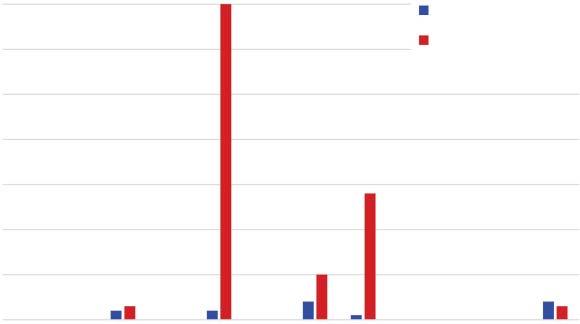
Figure1.1 Intermittentandlumpydemand.Source:BoylanandSyntetos(2008).©2008,Springer Nature.
lackofinformationassociatedwithintermittentdemandpatternscoupledwiththisdual sourceofvariabilitycallsforsimplifyingassumptionswhenmodellingthesepatterns.A commonsimplifyingassumptionisthatthedemandisnon-seasonal.Suchsimplifications mayimpedethedevelopmentofsolutionsthatareoptimalinastatisticalsense,but doallowforthedevelopmentofmethodsthatpotentiallyareveryrobustandeasyto implement.Robustnessisdefinedhereasa‘sufficientlygood’performanceacrossawide rangeofpossibleconditions.Optimalityisdefined,forparticularconditions,asthe‘best’ performance.
Weshallreturntorobustnessandstatisticaloptimalityinlaterchaptersbut,forthetime being,itissufficienttosaythatrobustnessisessentialinpracticalapplications.Whileoptimalityisdesirable,itshouldnotbeattheexpenseofrobustness.Manyofthemethods tobediscussedinthisbookhavebeenfoundtoberobustbysuchsoftwarecompaniesas BlueYonder,LLamasoft,Slimstock,andSyncronInternational,helpingtheircustomersto dramaticallyreduceinventorycosts.
1.4.2BusinessContext
Withrobustnessinmind,thisbookpresentsarangeofapproachestointermittentdemand forecastingthatareapplicableinanyindustrialmaketostock(MTS)setting.Inadditionto anMTSsetting,unlessotherwisespecified,wefocusonsinglestockkeepingunit(SKU), singlestockinglocationenvironments,asexplainedbelow.
Maketostock.InanMTSenvironment,customersarewillingtowaitnomorethanthe timeittakestodelivertheparticularitemtothemandsotheitemneedstobeavailablein stock,readytobedispatched,or,inthecaseofretailing,itneedstobeavailableontheshelf. Inthiscase,demandisnotknownandneedstobepredicted.Thealternativeenvironment isknownasmaketoorder(MTO),wheretheproductsarenotassumedtobeinstock,and thecustomermustwaituntilthemanufacturerassemblestheproductforthem.Inthiscase,
customerdemandisknownanddoesnotneedtobepredicted.Thissituationiscommonfor someproducts(e.g.furniture)butnotforothers(e.g.automotiveoraerospacespareparts). Thereisalsoamoveto3Dprintingofproductsinsomeindustries,whichisaformofMTO butwithshorterdelays(TechnicalNote1.1).
Singlestockkeepingunit(SKU)approaches.Wearelookingatforecastingtherequirements(andmanagingtheinventories)ofsingleSKUs.Althoughsomeofthemethodsto bediscussedinthisbookrelyuponcollectiveconsiderations(acrossagroupofSKUs),the restofthematerialconsiderssingleSKUproblems.Thisisbecausehigherlevelsofaggregationare,typically,notassociatedwithintermittentdemand.Consider,forexample,10 intermittentdemanditems,allofwhicharereplenishedfromthesamesupplier.Itmakes sensetoconsidertheaggregatedemandofthoseitemstofacilitateefficienttransportation arrangements.However,althoughdemandattheindividualSKUlevelmaybeintermittent, aggregatedemand(acrossall10SKUs),mostprobably,willnotbeintermittent.
Singlestockinglocationapproaches.Wefocusondetermininginventoryreplenishment requirementsateachsinglelocation,withouttakingintoaccountinteractionsbetween locations.Assuch,wedonotconsiderthepossibilityofsatisfyingdemandbylateraltransshipmentsofstocksbetweenstores.Thisisbecausethesedecisionsrelateexplicitlytojoint inventory-transportationoptimisation,whichisbeyondthescopeofthisbook.Further,and asdiscussedabove,aggregatedemand(acrossdifferentlocationsinthiscase)istypicallynot associatedwithintermittence.
Weshouldalsomentionthat,althoughtheterm‘demand’isbeingusedinthisbookwhen referringtoforecasting,demandwillnotalwaysbeknownand,inthiscase,actualsales mustbeusedasaproxy.Theterms‘demand’and‘sales’areusedinterchangeablyinthis bookalthough,strictlyspeaking,thelatterisoftenusedasanapproximationfortheformer.
1.4.3StructureoftheBook
Thisbookstartsbycontextualisingintermittentdemandforecastinginthewiderscholarshipandpracticeofinventorymanagement.WebegininChapter2withadiscussionof inventorymanagementandsomeofitsimplicationsforforecasting.Then,inChapter3,we examinetheservicedriversofinventoryperformance.ThefocusshiftsinChapters4and 5tothecharacterisationofintermittentdemandpatternsbydemanddistributions.This formsanaturalfoundationforthenexttwochapters,whichfocusonforecastingmethods. Chapter8takesusbacktoinventoryreplenishmentandthelinkagebetweenforecasting andinventorycontrol.Inthenextchapter,wemoveontothemeasurementofforecasting accuracyandinventoryperformance.Forecastingaccuracyassessmentisanotoriouslydifficultproblemforintermittentseries,andthechapterhighlightsthetrapsfortheunwary andgivessomepointerstogoodpractice.
Althoughthemainemphasisofthisbookisonforecasting,classificationmethodsare alsoimportantinpracticalapplications.InChapter10,welaysomeofthegroundworkfor classificationmethods,discussedinChapter11,whichhavebeendesignedspecificallyto addressintermittence.Inthenextchapter,weturnourattentiontoobsolescenceandforecastingmethodsthatareparticularlysuitedtothisstageofthelifecycle.Chapter13presents analternativeperspectiveondemandforecasting,concentratingonmethodsthatdonot assumeanyparticularformofdemanddistribution.Bycontrast,Chapter14delvesmore

